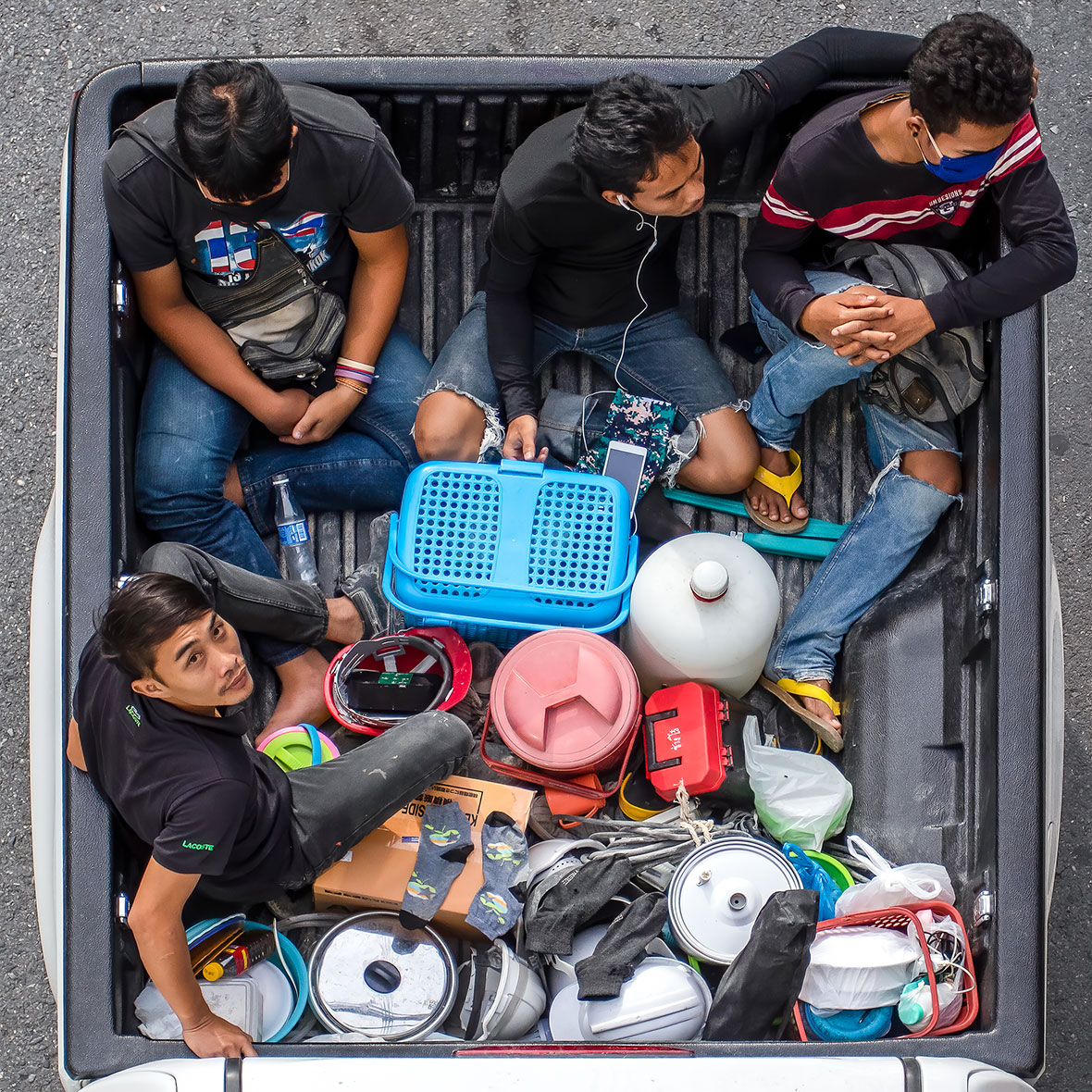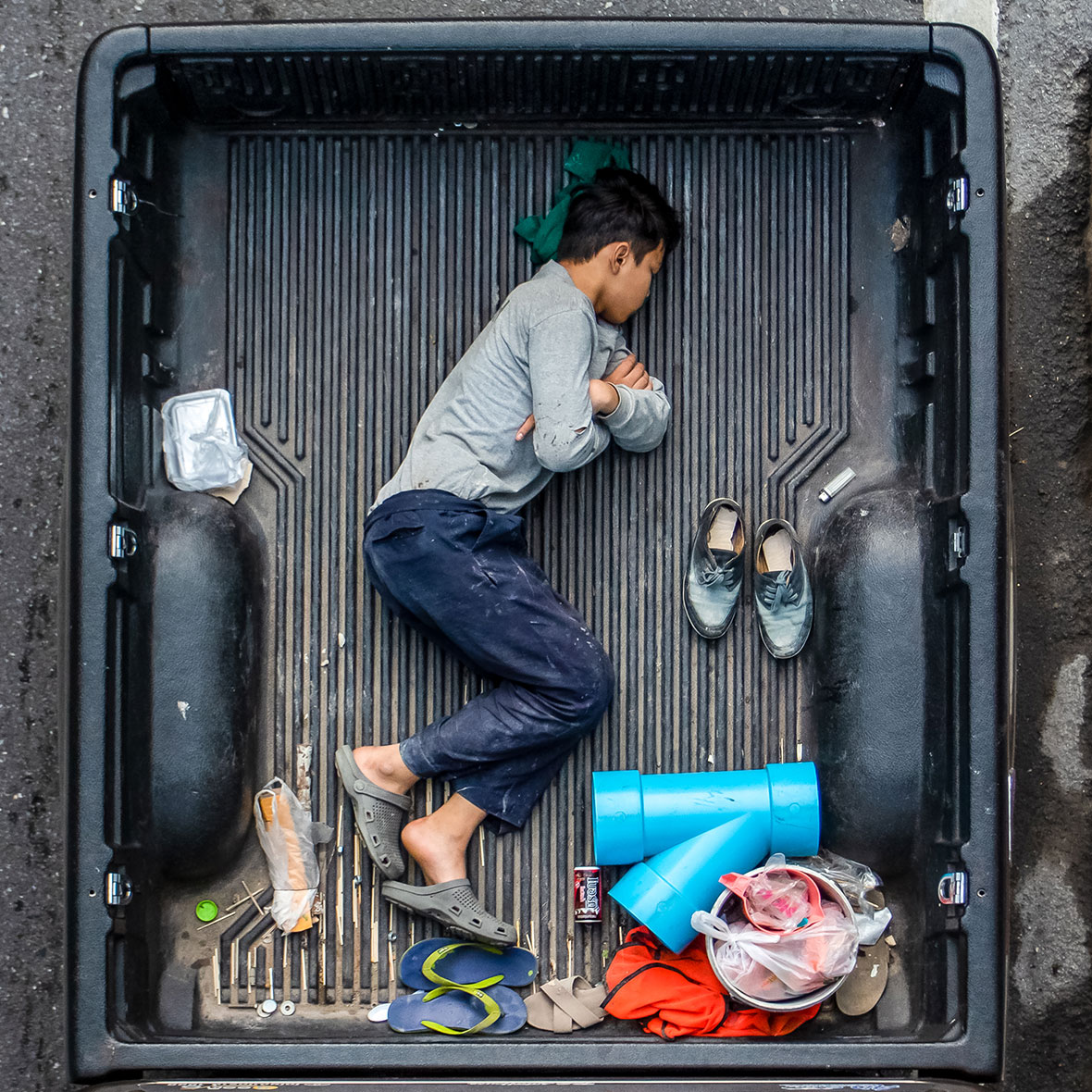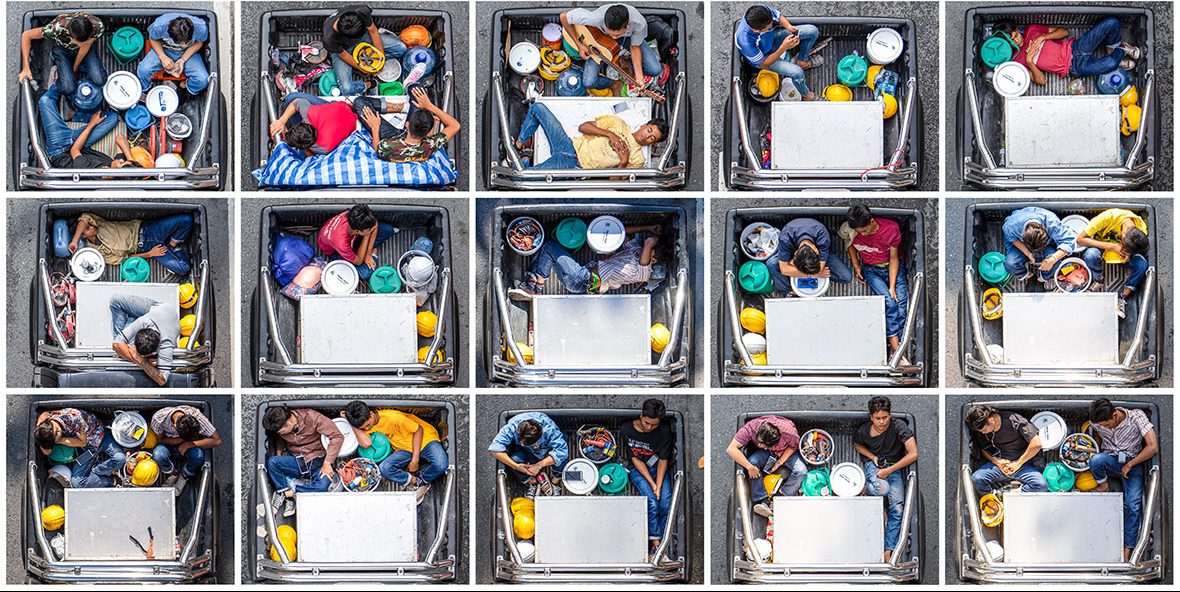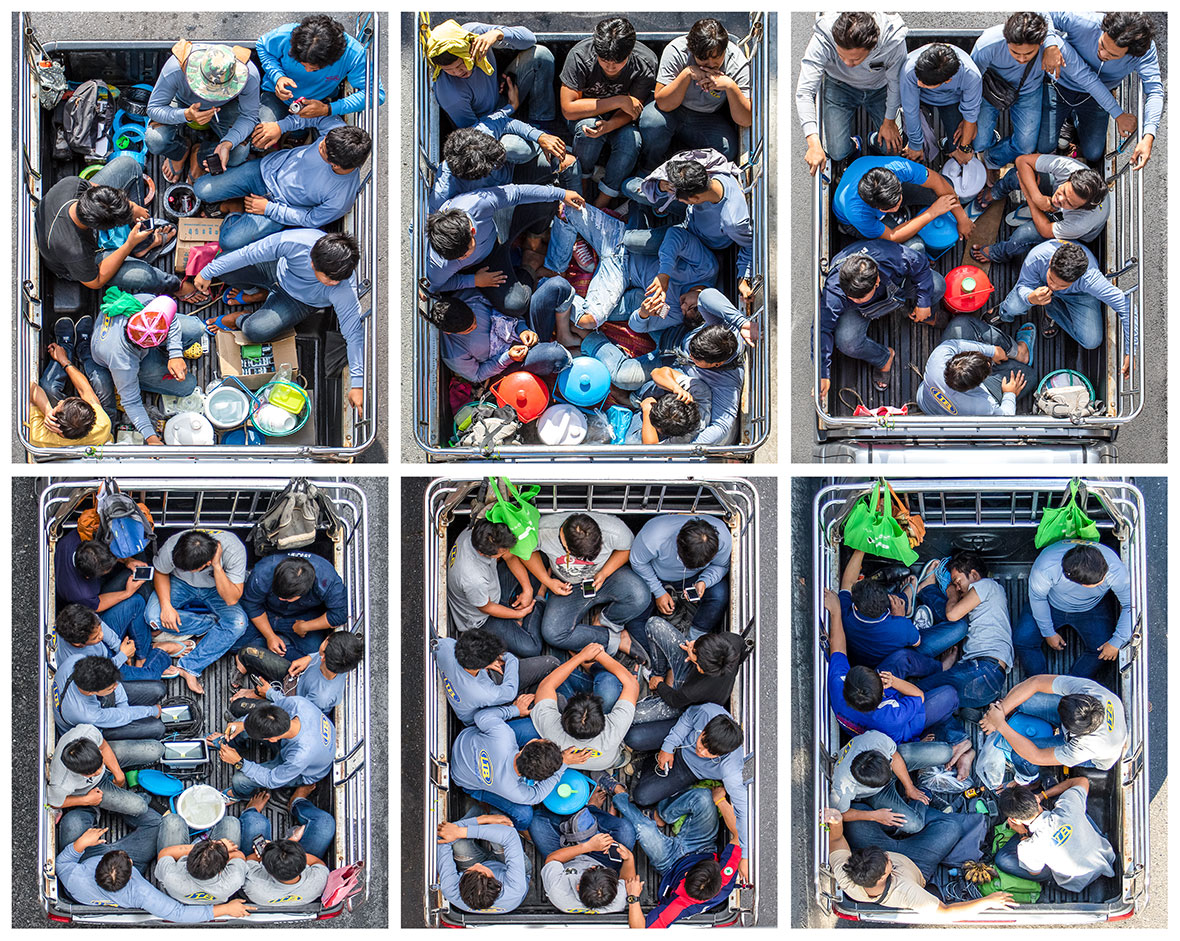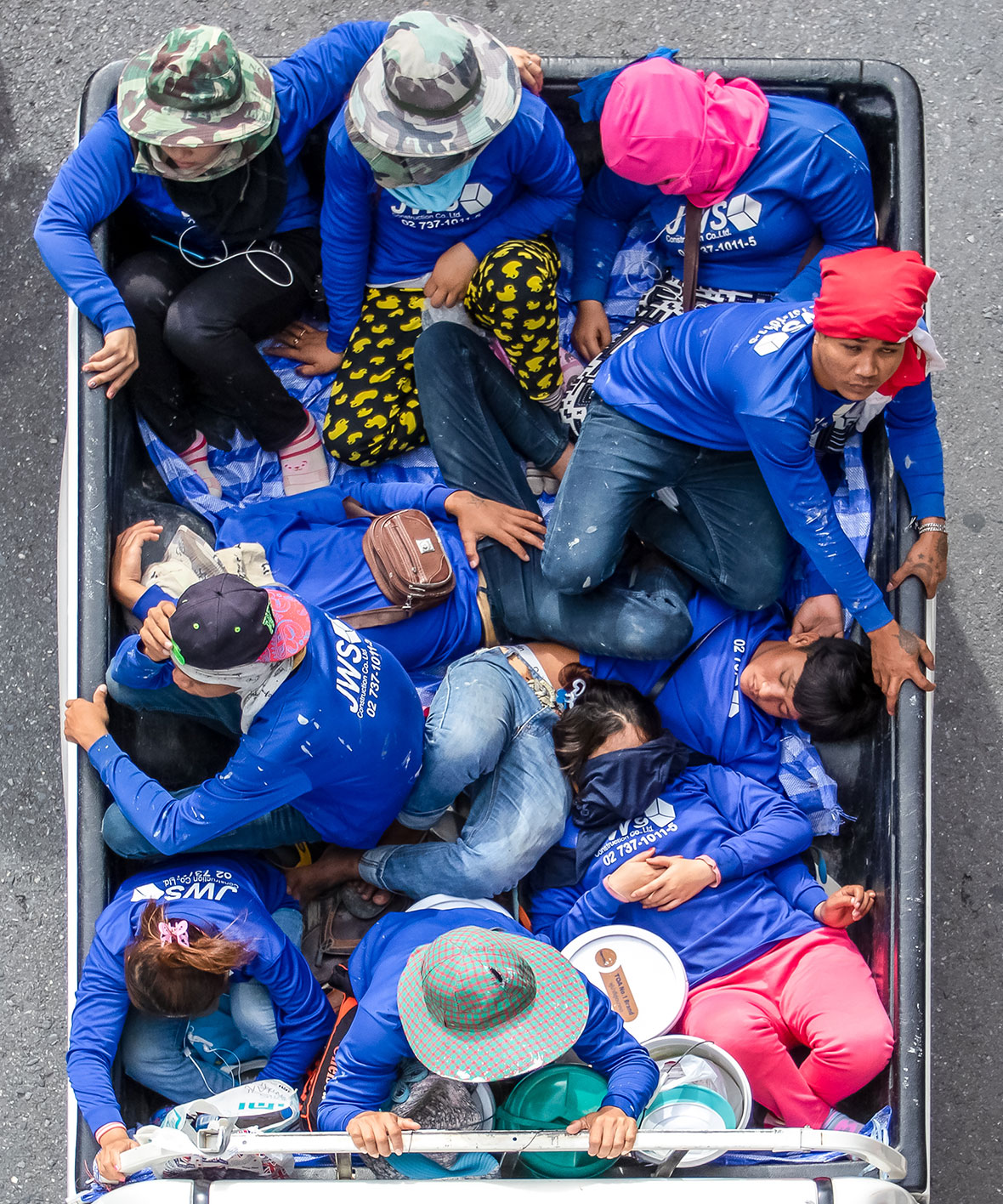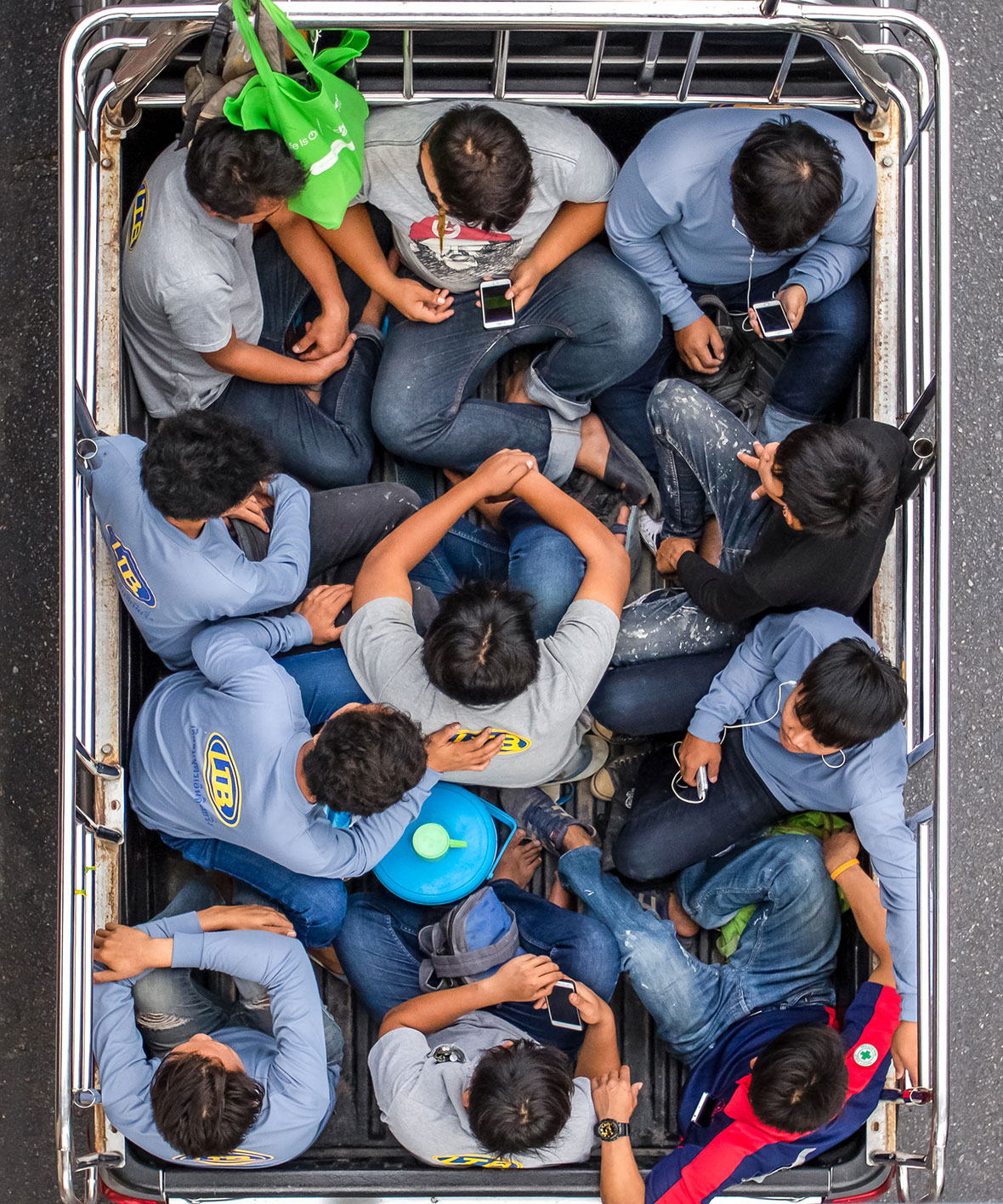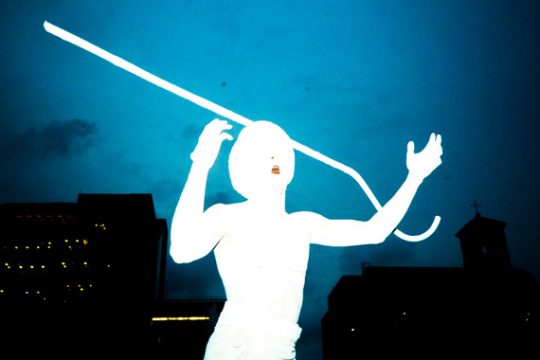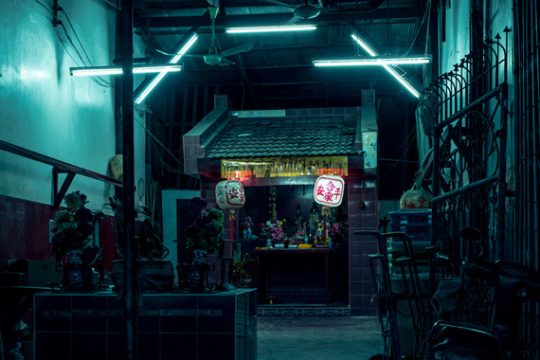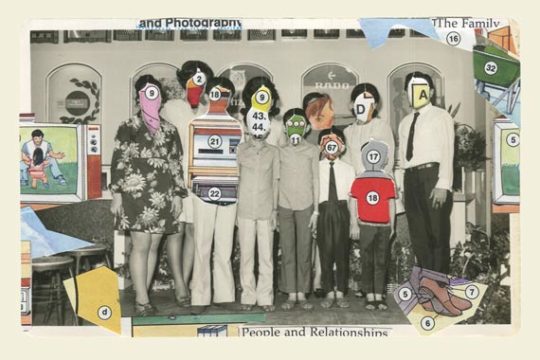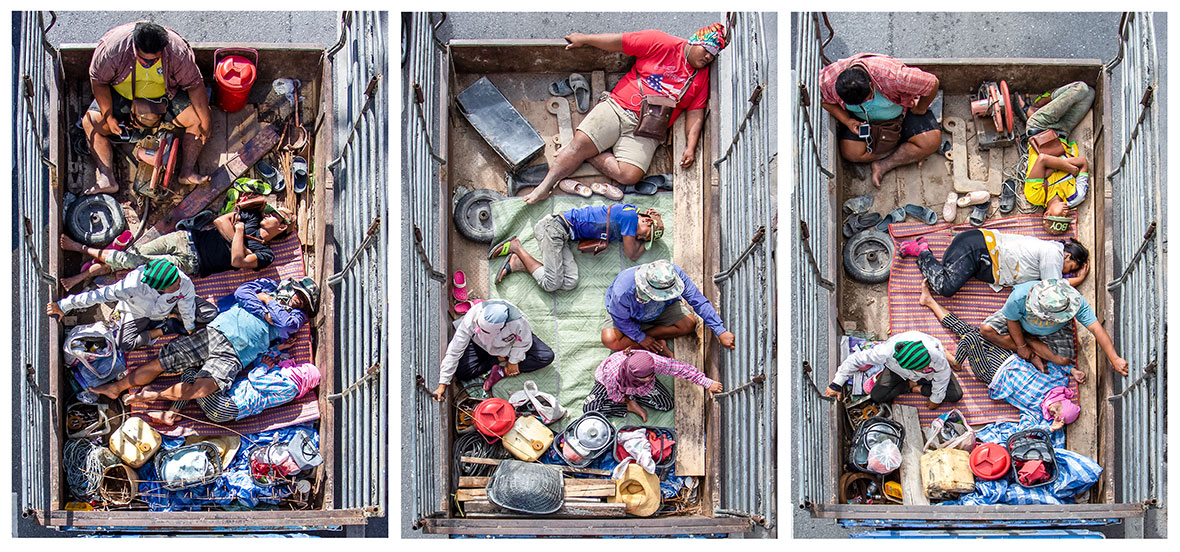
Thamarong Wanarithikul leaves his house at eight in the morning to take the Bangkok Skytrain to work. One day, while crossing a pedestrian bridge, he saw a group of men sleeping in the back of a truck that passed right below him. He took a picture with his phone and continued on his way.
That was the first image of 8 a.m., a series of more than 3000 photographs of people commuting to work on the backs of pickup trucks taken from the same pedestrian bridge. Wanarithikul would stick his head out and point his camera downwards, capturing his subjects from above. The striking result is a cross between candid photography and social documentary, exposing the harsh lives of Bangkok’s workers.
Thamarong Wanarithikul 每天早上八点从家出门,然后搭乘曼谷的架空列车上班。某天,正当他穿过人行天桥时,发现一辆载满人的卡车从桥下通过,那些人正在卡车的货架上睡觉。他用手机随手拍下这一幕,转头继续前行。
这是《8 a.m》的第一张照片,而整个系列共有 3000 多张照片。Thamarong 用镜头定格住工人坐在皮卡车后面上下班的景象,所有照片都拍摄于同一座人行天桥上。拍照时,Thamarong 探出身子,将相机瞄准下方,按下快门。这些令人印象深刻的照片即是抓拍,同时带有一定社会纪实性,是曼谷工人生活的真实写照。
In his photos, only a few of the pickup trucks have protective bars or improvised benches. Usually workers sit on the floor, crowded against each other and trying to sleep. When there’s room, they stretch out on the floor, and when there’s not, they get unavoidably entangled in each other’s arms and legs. They often also share space with all kinds of tools—the clearest indication of who they are.
“Based on these clues, I can only assume, but many of them seem to work in construction, as you can see from the helmets and toolboxes,” Wanarithikul says. “You also see things that could relate to plumbing, catering services, delivery services, or similar things.”
照片中的皮卡车,只有少数几两装配有安全防护栏和简易长凳。大多时候,工人只能席地而坐,相互靠在一起勉强入睡。人不多的时候,他们还能平躺下来;但只要人一多,必然会摩肩接踵。工人的旁边还常常摆满各种工具,让他们的身份看起来一目了然。
“我只能根据这些线索来推测,从头盔和工具箱来看,他们大多数人应该都在工地上班。”Thamarong说,“还有一些看起来像是从事管道、餐饮、送货或其他工作。”
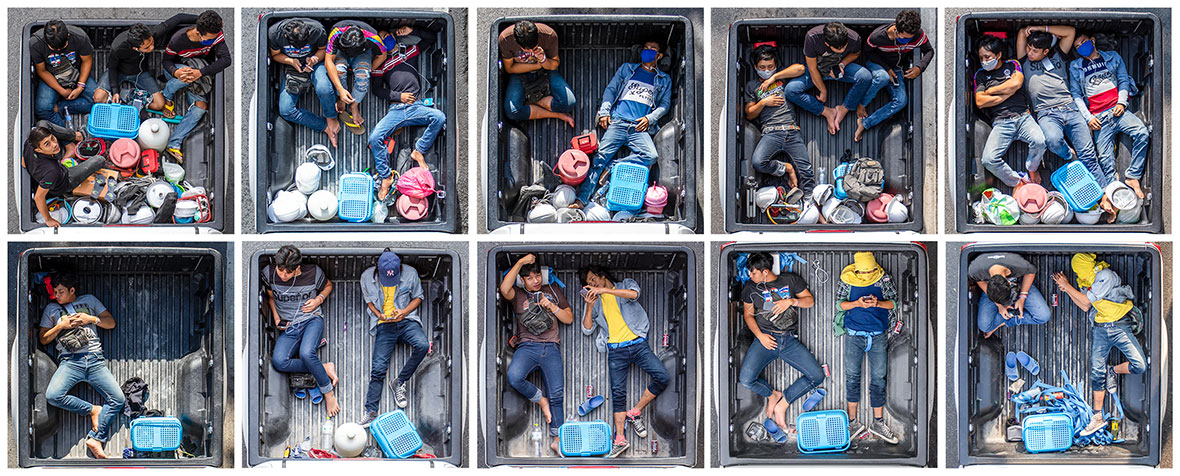
He believes that many of them are Burmese migrants who have crossed the border to work in Thailand. Most likely they hold residency permits, because the government is making efforts to formalize their status. But the trucks belong to the companies they work for, and it’s illegal for them to commute this way. “The government turns a blind eye, but if there’s an accident, these people will fly out of the trucks.”
With the high costs of living in central Bangkok, these workers probably travel from outside the city, from places with no access to public transportation. This is a sobering thought: it means they’ve already had a long journey from their homes.
他认为,照片中许多人都是来泰国工作的缅甸移民。他们中大多数可能持有居留证,因为政府正在努力合法化他们的身份。但是卡车属于公司,以这种方式上下班显然是非法的。“政府对此视而不见,一旦发生事故,这些人可能会从卡车上摔下来。”
由于曼谷市中心的生活成本高昂,这些工人很可能都住在市区外面,那里并没有可以乘搭的公共交通。也就是说,他们从离开家出发到拍摄的时间点,已经坐了很久的皮卡。
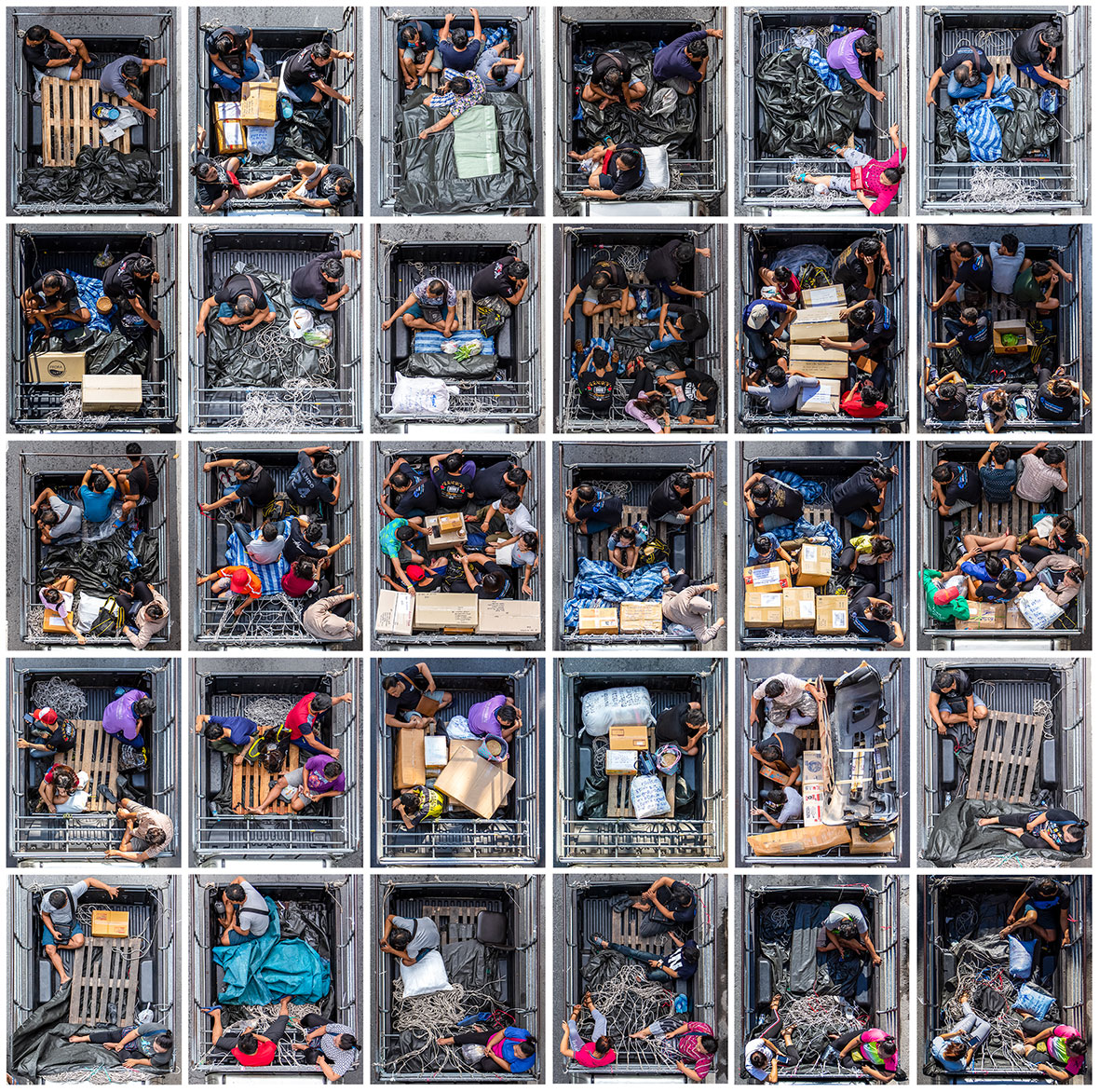
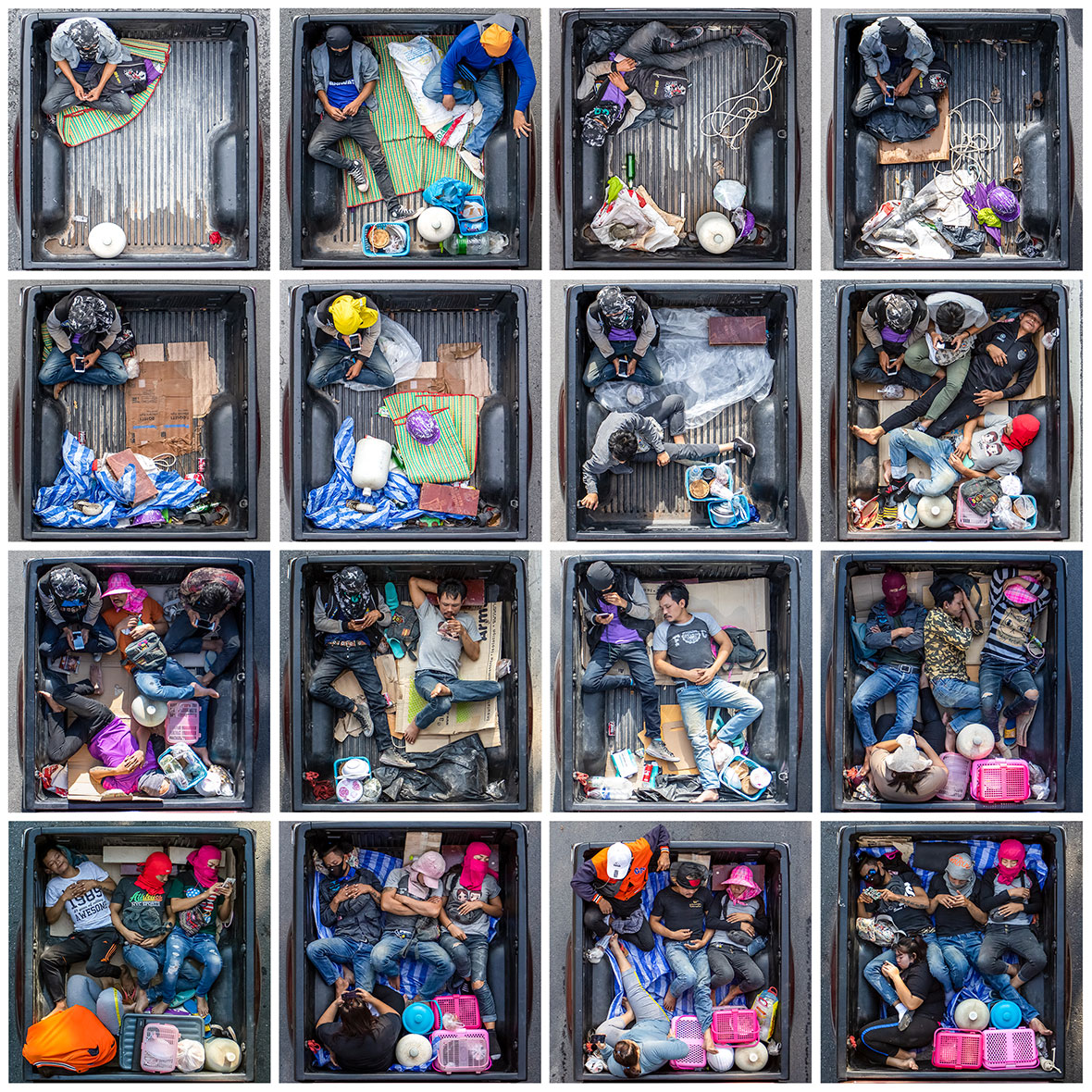
After going back to that same bridge repeatedly over the course of a few months, Wanarithikul began approaching local galleries with his photos. For a long time, he received no answer, until one day, he heard from Manit Sriwanichpoom, a well known local photographer and the owner of the prestigious Kathmandu Photo Gallery.
“Manit noticed that some of my photos were of the same truck, and with the same people. I had realized that before, but it was never my selling point. It was he who told me to tell the story of these people, day after day,” he says.
With a new focus, Wanarithikul began to stand on the bridge for more than 45 minutes every day on his way to work. Because traffic is particularly bad at this hour, he could work on his framing and make interesting observations.
连续拍摄了几个月后,Thamarong 带着这些照片,联系了当地画廊。很长一段时间,他没有得到任何回应,直到一天,他收到 Manit Sriwanichpoom 发来的讯息。Manit 是当地一名著名的摄影师,也是 Kathmandu 画廊的老板。
“Manit 发现我的一些照片拍摄的是同一辆卡车上同样的人。我以前也留意到这一点,但从来没有以此作为拍摄的重点。他建议我可以拍摄下同一辆卡车日复一日的照片,讲述这些人的故事。”Thamarong 解释道。
带着新的拍摄角度,Thamarong 回到天桥上拍摄,常常停留超过45 分钟。由于正值上班高峰,曼谷的交通特别拥挤,这让他可以有时间研究构图,捕捉有趣的画面。
“I couldn’t be late—trucks come more or less at specific times. One comes at eight o’clock, another at eight-fifteen, then eight-twenty, and so on,” he says.”But I would see some trucks three or four times, and then they would never come again. It’s incredibly difficult to take a large number of pictures of the same truck.”
Wanarithkul kept track of the different trucks by their bodywork, markings, and other vehicle details. He divided the series into 15 collections and arranged the images in chronological order.
“我不能迟到,这些卡车每天基本都会在特定时间出现。一辆在八点出现,另一辆在八点十五,然后是八点二十,依此类推。”他说,“但有些卡车我看到三到四次后就不再出现了。要拍摄同一辆卡车的大量照片并非易事。”
Thamarong 一般通过车身、标记和其他细节来辨别不同的卡车。他将整个摄影系列分为 15 组,按照时间顺序排列每一组照片。
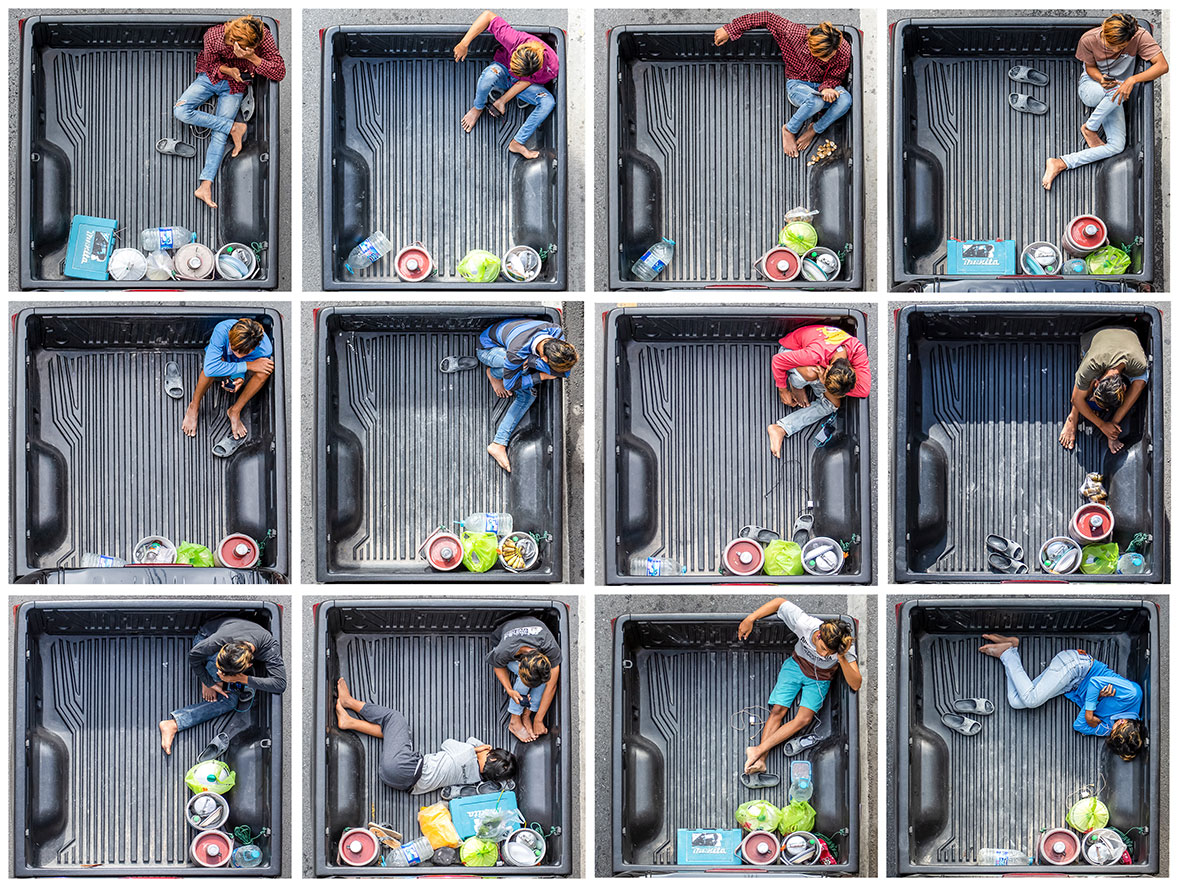
In one collection of 12 pictures, a young man always sits at the same corner of the truck. At first, his hair is entirely dyed. But as the pictures progress, the color moves through his hair. In the last shot, in which he’s resting his head on the wheel case, only a few hair strands are still dyed. It took Wanarithikul over two months to complete this collection.
Another photoset starts with a boy sleeping in a semi-fetal position. He appears in many of the images alone, but later, two other older men join him, and then, suddenly, he disappears. “This boy is not going to school, he’s going to work,” Wanarithikul says. “He is sleeping under the sun on the back of a truck, and you can tell he has a difficult life.”
其中一组由 12 张照片组成的系列中,一个年轻男孩总是坐在卡车的同一角落。起初,他有一头金色染发,但是随着时间推移,头发的颜色慢慢褪去。在最后一张照片中,他将头靠在车轮保护罩上,隐约只剩下几撮金色的头发。Thamarong 耗时两个多月才完成了整个系列的拍摄。
另一组照片中,一个男孩总是蜷缩地睡在车后架。刚开始,车上只有他一个人,直到两个更年长的男人加入。再后来的某一天,男孩突然不再那辆卡车上出现。Thamarong 说:“这个男孩没有去上学,而选择了工作。他躺在卡车后面,在烈日下睡觉,生活应该挺不容易的。”
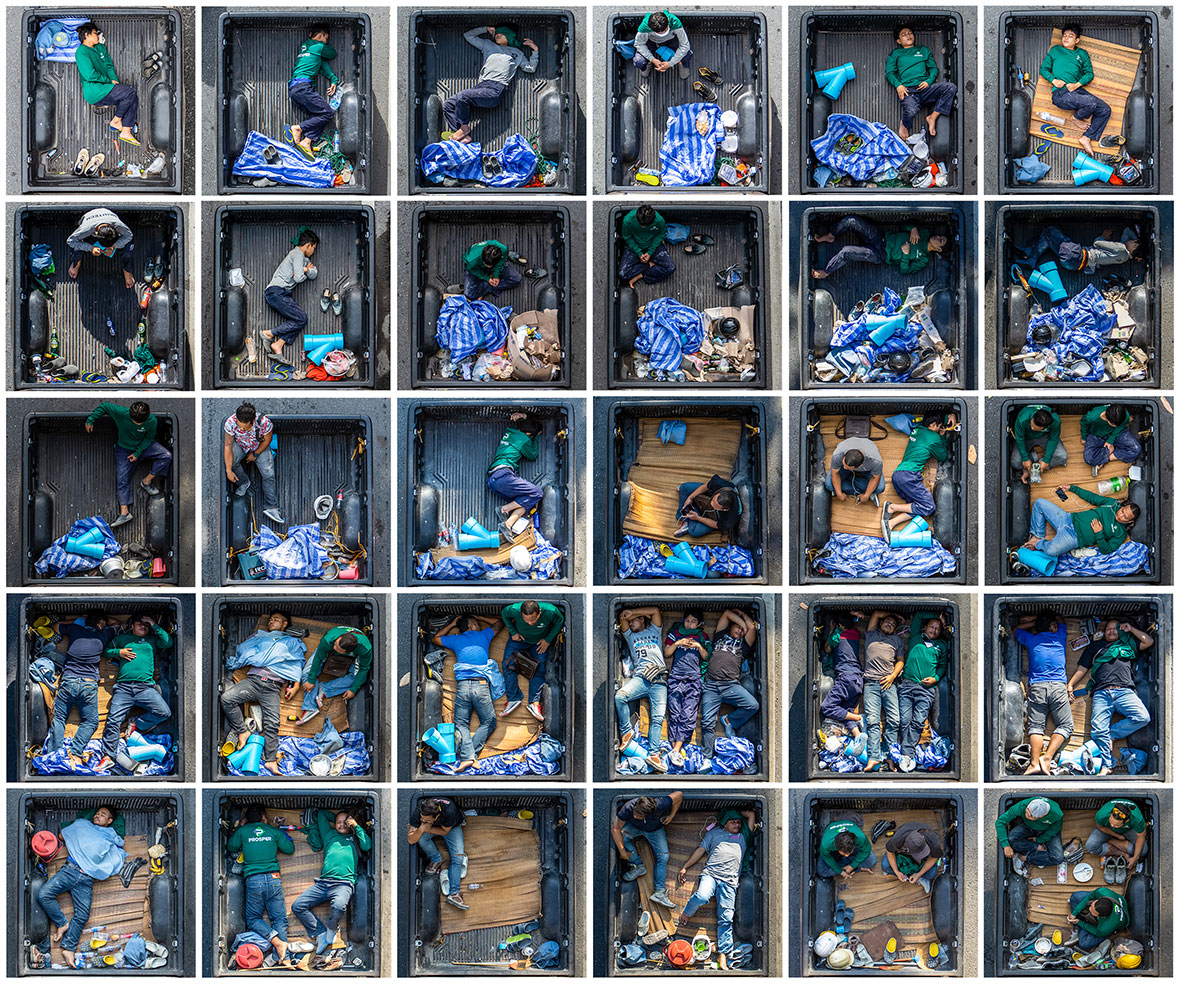
They tend to sit in the same places every day. They try to sleep or use their phones to pass the time. Most protect their faces from the scalding sun with a piece of cloth, and they all rest uncomfortably on the uneven pickup truck bed. They look drawn and tired—but their day has only just begun.
卡车上的人大多每天都坐在同样的位置,要么睡觉,要么玩手机打发时间。为了不被太阳晒伤,他们用布遮住了脸。在凹凸不平的皮卡车上,他们就这样凑活着;他们看上去如此疲惫,但是对他们来说,新的一天才刚刚开始。
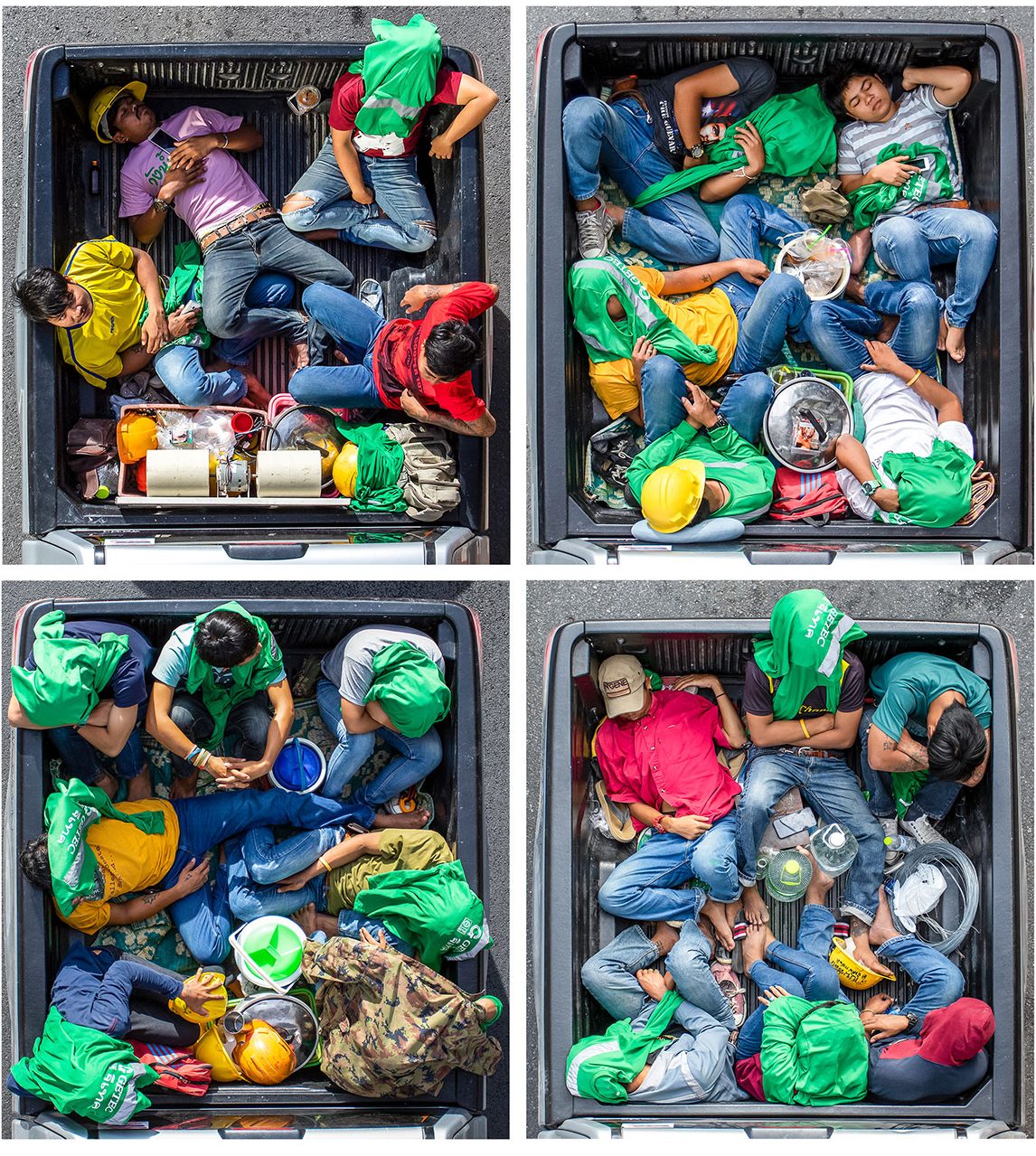
“8 a.m. says a lot about Bangkok. I take the Skytrain to go to work. It has air conditioning, and it’s fast. But these workers wake up much earlier to sit under the sun for a very long time. We see this every day, and we ignore it,” Wanarithikul says. His series is a stunning visual reminder to anyone oblivious to the abiding inequity of life.
Wanarithikul’s first and only show, held at Kathmandu Gallery in early 2019, opened to wide acclaim. What started as a single snapshot evolved into a study of social conditions and an empathizing portrait of people caught between worlds.
“关于曼谷,《8 a.m》讲述了很多。我每天坐高架铁上班,里面即有空调,又快速方便。但是这些工人每天要起早贪黑,在烈日下暴晒很长的时间。我们每天都会看到这些景象,但我们对此视而不见。”Thamarong说道。他希望通过这些摄影作品,提醒人们不要遗忘生活里那些不平等的现象。
Thamarong 的首场展览(也是至今唯一一场展览),于 2019 年年初在Kathmandu 画廊举行,并受到了广泛好评。从一张手机快照开始,演变成对社会现实的探讨,这些照片以充满同情的态度,展示了那些身处世界夹缝的人们。
Like our stories? Follow us on Facebook and Instagram.
Instagram: @thamarong
Contributor: Tomas Pinheiro
Chinese Translation: Olivia Li

